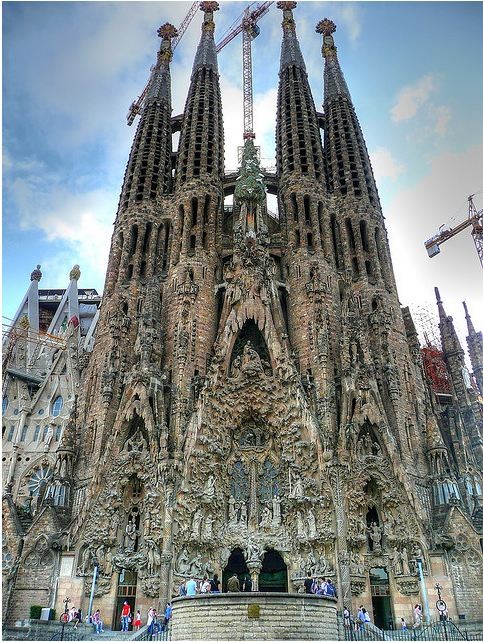
Our newest addition to the site, our AD Classics, highlight impressive and innovative buildings spanning the course of history. While we are continually fascinated by Kahn’s National Assembly Building of Bangladesh (1982) or SOM’s Beinecke Rare Book and Manuscript Library (1963), what about works that date even farther back….before Corbusier’s Unite d’ Habitation (1952) and Mies’ Farnsworth House (1951); before the Eames House (1945) and Wright’s Unity Temple (1905). Dating back to the 1880s, Antoni Gaudí devoted over a decade of his life to one of Barcelona’s, and the architecture world’s, most prized structures, la Sagrada Família. The cathedral has remained under construction for hundreds of years as debates concerning whether or not its current state is too far from the original vision continually spark controversy. Yet, this Sunday, as the NY Times reported, Pope Benedict XVI visited the cathedral to consecrate the Temple Expiatori de la Sagrada Família. The visit spurred hundreds of workers to prepare the church in an effort to highlight the newest “ latest architectural and artistic features”.
More after the break.
Even after years of construction, amazingly, la Sagrada Família is still years away from completion. This is largely due to the fact that the Sagrada Família depends mostly on tourism entrance fees of €12 to pay for construction (with this, the church can invest about €1.5 million a month in the construction work).

Currently, Jordi Bonet, an 85-year-old architect, has been leading construction for the past 30 years. Bonet, the son of an architect who assisted Gaudí, was introduced to the Sagrada Família as a child at 7 years of age. Bonet is a true believer in the idea that Gaudí left room in his vision for creative liberties to be taken. He told the Times, “Almost every cathedral has been the work of many people and over many centuries. Even when Gaudí was in charge, there were 40 different sculptors working for him, and of course he inspired them, intervened and commented on their work — but it remained the work of several different sculptors.”
Bonet has been focusing on the altar area, a place where Gaudí hasn’t left strict guidelines (for other parts, Gaudí has outlined instructions in writings, drawings and plaster models). Bonet told the Times, “All that I had from Gaudí for the altar was one drawing and measurements, but I do feel that is sufficient to call this a faithful interpretation.”
Although thousands have contributed to the work in progress, there is still no definite end point in sight. When Gaudí died, less than a quarter of the project was complete. While the Sagrada Família has reached beyond its half-way point, (although challenging components, such as the central 560-foot tower, still need to be completed), Bonet expressed his honest opinion as to when the master piece would finally be finished, “I don’t know…but perhaps in less than a century.”

